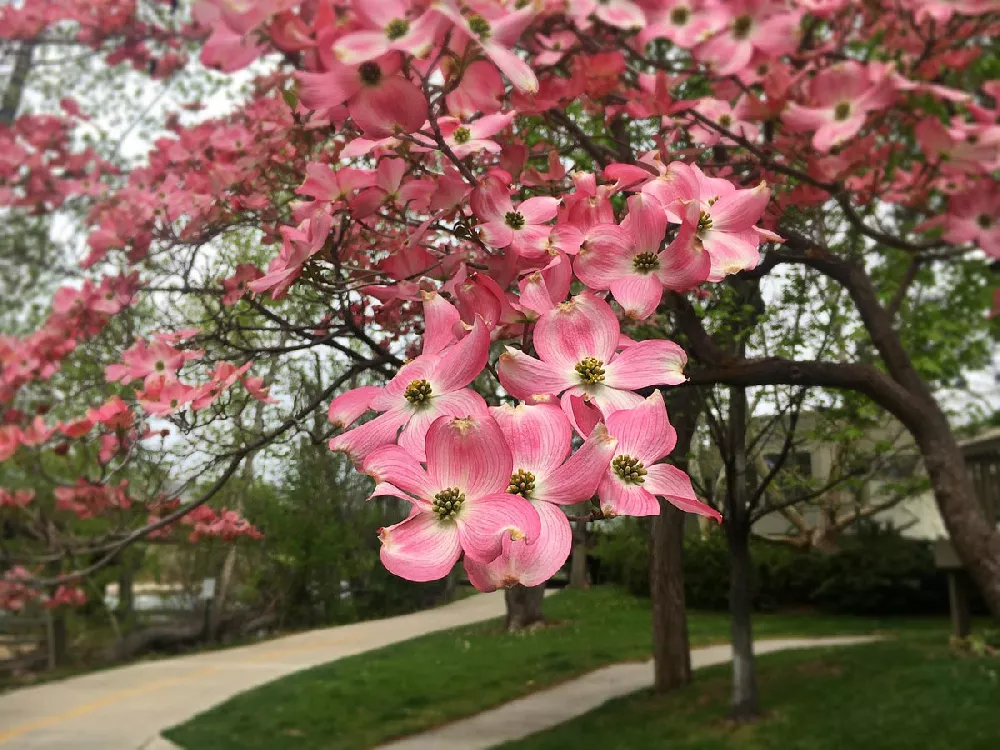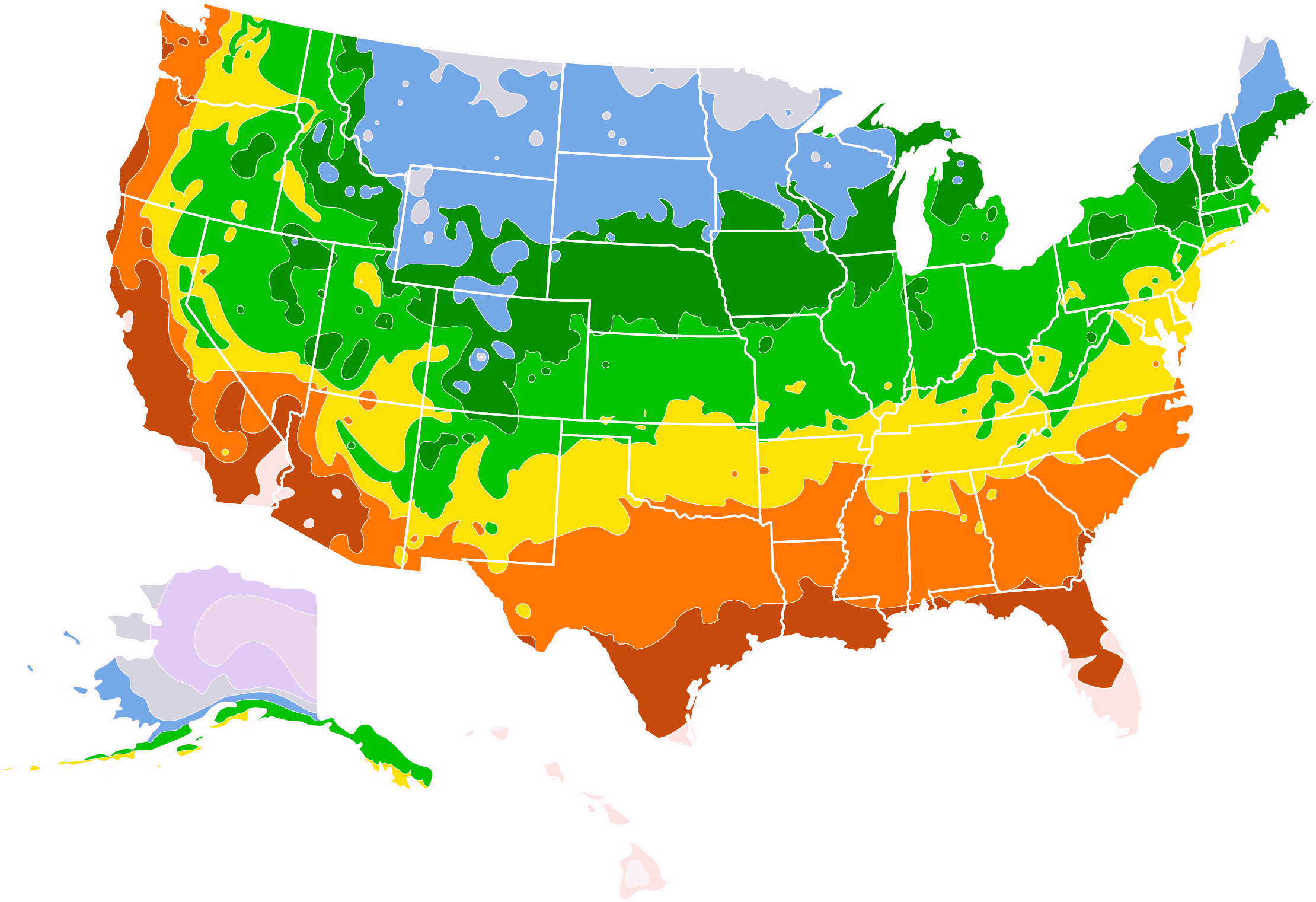- Home >
- Cherry Trees >
- Cornelian Cherry Dogwood Tree
Cornelian Cherry Dogwood Tree for Sale - Buying & Growing Guide
Cornelian cherry dogwood tree, Cornus Mas, may just be the perfect landscape tree, providing year-round interest to the lucky gardener who owns one. It is one of the first trees to flower in spring, sporting petite, star-like yellow flowers on bare branches. In summer, the glossy bright green leaves and vivid red berries, beloved by birds and wildlife, take center stage. In fall, the leaves turn an appealing purple-red. And in winter, the naturally exfoliating trunk provides a subtle harmony of gray and brown shades to add texture to the sleeping garden. Cornelian cherry can be grown as a small tree or as a multi-trunked shrub, depending on how you prune it. Here are a few more reasons to grow this versatile plant:
- Gold medal winner at Pennsylvania Horticultural Society
- Deer resistant and free of insect pests and diseases
- Edible fruit used to make jams and sauces
Enter your zip code to find nearby stores that may carry this plant.
Plant Care
Sunlight

Cornelian cherry does best in partial to full sun — four hours or more of direct light a day.
Watering
Water your Cornelian cherry regularly, especially in very hot or dry weather — at least an inch a week.
Fertilizing

Fertilize in spring with a slow-release balanced fertilizer such as a 10-10-10 formula.
Planting and Care
Planting instructions
Site your Cornelian cherry in soil that drains well and receives at least four hours of sunlight a day. Unpot your sapling and tease out any encircling roots, which can girdle the tree and slowly kill it. Dig a hole that’s as deep as the root ball and two to three times as wide. Place the tree in the hole. While holding it upright and steady, fill in around it with topsoil, tamping down as you go to eliminate air pockets. Water thoroughly. Apply a two- to three-inch layer of organic mulch such as bark chips around the root ball to conserve moisture and hinder weed growth, but keep it from touching the trunk to avoid rot.
Watering and nutrients
When newly planted, your Cornelian cherry will need watering every few days until you see robust new growth starting. Then scale back to once-a-week watering, although you may need to increase this if you’re experiencing very hot or dry weather. A mature tree will need less supplemental watering and should be able to thrive with just rain in most conditions. Fertilize your tree in spring with a balanced, slow-release fertilizer designed for landscape trees and shrubs.
Pollination
Cornelian cherry is self-pollinating, which means it has both male and female reproductive organs on a single tree. It will, however, produce a much larger crop of berries if you have multiple trees planted in close proximity to each other.
Pruning
Remove dead, damaged or diseased branches whenever you see them on your tree. You can also prune lightly for shaping in early spring before the flowers emerge. Cornelian cherry is prone to suckers, so unless you wish to grow your plant as a multi-stemmed bush, prune out any branches that grow up from the base of the trunk.
Pests and diseases
This hardy tree is resistant to most of the common diseases of the dogwood family. A healthy tree can stave off infection and infestation. A tree that is stressed may have issues with borers, leaf miners and scale insects. Potential diseases include crown canker, powdery mildew and leaf blight. Always water your tree at the base of the trunk and keep the area around the tree free of leaf litter or other debris to help avoid fungal issues.
Harvesting
Although many gardeners leave the berries for the birds, they are edible. The berries are, however, quite tart when raw. They are more commonly used to make jams and jellies. Fruits are ready for picking in midsummer when they are a bright red and starting to soften. Store in a cool location and use within a few days of picking.
Achieving maximum results
Knowing how to use your Cornelian cherry dogwood tree in the landscape is one way to achieve maximum results. The tree is a splendid specimen tree — standing alone or in a grouping of three on a front lawn and underplanted with shade-loving perennials such as astilbe. When pruned properly, a row of these small trees would make a dense and appealing hedge or windbreak. They would make a nice addition to the middle or back of a mixed planting bed, and because they can handle partial shade, you may want to try one in front of taller trees to achieve an edge-of-the-woodland look. You may also grow them in large containers, although they will stay smaller than if they were planted in the ground.
FAQs
Where can I grow Cornelian Cherry dogwood trees?
Cornelian Cherry will thrive almost anywhere in the continental U.S. They are hardy in USDA hardiness zones 4-9, which includes all of the U.S. except for the southern tip of Florida and the most northern parts of the Midwest and New England.
How big does Cornelian Cherry get?
A mature Cornelian Cherry may reach a height of 15-30 feet, if it is well cared for, and a mature width of 15-20 feet. It is a slow-growing variety, so it will take some years to reach its mature height and width. Avoid planting it under low-hanging overhead utility wires or cables to avoid having to trim it back if the branches interfere.
Are Cornelian Cherry trees messy?
Cornelian cherry trees are no messier than any other deciduous tree. You may find that there is not even a need to clean up the berries, as they will have been eaten by birds and other wildlife. The only caveat is to keep the base of the trunk clear of any suckers, which can give the tree a messy look as they spread.
Compare Similar Products
You can't add more Product Name - Product size to the cart.
OK









